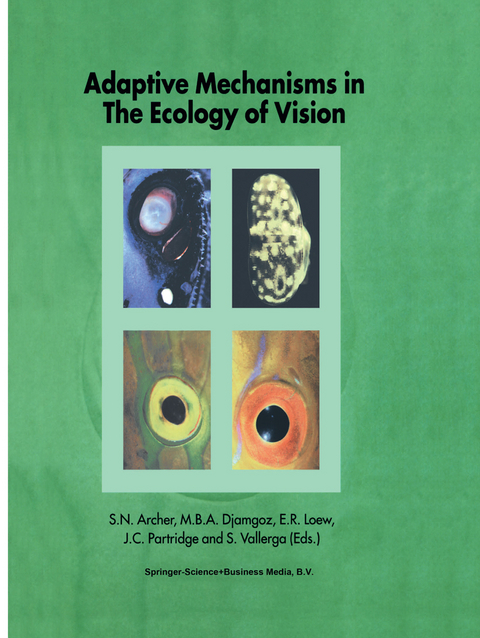
Adaptive Mechanisms in the Ecology of Vision
Springer (Verlag)
978-90-481-5124-0 (ISBN)
I. General Principles.- 1a. Light and Photoreception: Physical principles.- 1b. Light and Photoreception: Visual pigments and photoreception.- II. Biophysical Adaptations.- 2. Compound eye structure: matching eye to environment.- 3. Vertebrate optical structure.- 4. A review of vertebrate and invertebrate optical filters.- 5. Vertebrate photoreceptors.- 6. The extraretinal photoreceptors of non-mammalian vertebrates.- 7. The regulation of vertebrate biological clocks by light.- III. Biochemical and Physiological Adaptations.- 8. Adaptation of visual pigments to the aquatic environment.- 9. Visual adaptations in crustaceans: spectral sensitivity in diverse habitats.- 10. Functional organization of the outer retina in aquatic and terrestrial vertebrates: comparative aspects and possible significance to the ecology of vision.- 11. Inner retinal signal processing: adaptation to environmental light.- 12. Ecological aspects of vertebrate visual ontogeny.- 13. Molecular biology of photoreceptor spectral sensitivity.- IV. Behaviour and Communication.- 14. Visual systems, behaviour and environment in cephalopods.- 15. Optical structure and visual fields in birds: their relationship with foraging behaviour and ecology.- 16. Behavioural ecology and retinal cell topography.- 17. Flower advertisement for insects: Bees, a case study.- 18. Bioluminescence.- 19. The behavior of animals around twilight with emphasis on coral reef communities.- 20. Vision and behavior in primates.
| Zusatzinfo | XIX, 668 p. |
|---|---|
| Verlagsort | Dordrecht |
| Sprache | englisch |
| Maße | 210 x 279 mm |
| Themenwelt | Medizin / Pharmazie ► Studium |
| Naturwissenschaften ► Biologie ► Evolution | |
| Naturwissenschaften ► Biologie ► Humanbiologie | |
| Naturwissenschaften ► Biologie ► Ökologie / Naturschutz | |
| Naturwissenschaften ► Biologie ► Zoologie | |
| ISBN-10 | 90-481-5124-4 / 9048151244 |
| ISBN-13 | 978-90-481-5124-0 / 9789048151240 |
| Zustand | Neuware |
| Haben Sie eine Frage zum Produkt? |
aus dem Bereich


